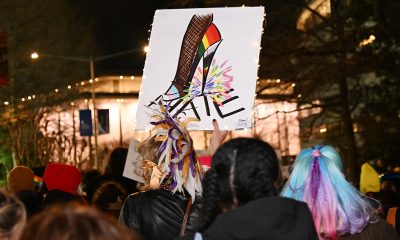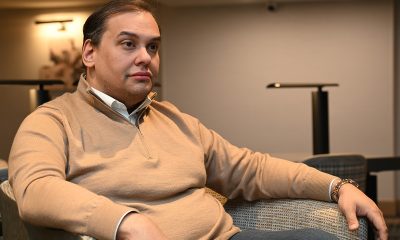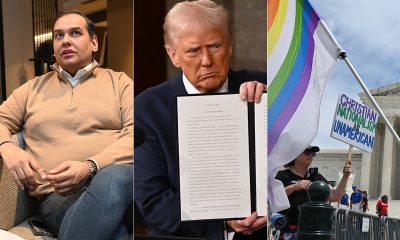a&e features
Nothing compares to Prince
Gender-bending genius left behind treasure trove of music

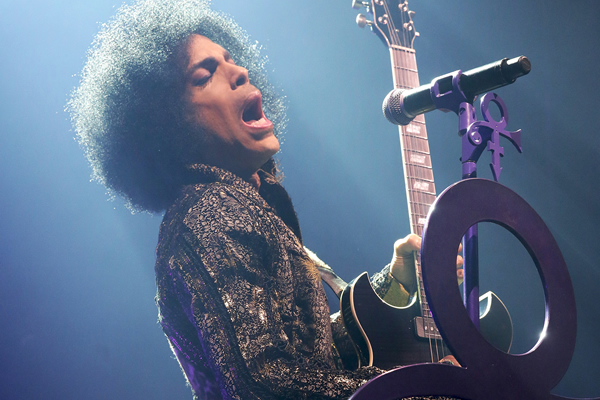
Any decent artist has gems lurking beyond his or her hits, but the Prince catalogue is astounding in its scope and quality. (Photo by Chelsea Lauren, NPG Records)
Many of us are still trying to wrap our heads around the fact that Prince is gone.
Through the disbelief and mourning, many have started to look back and take stock of just what a peerless musical legacy Prince left behind. It’s stunning in its quality and quantity, its influence and diversity. Prince was rock’s most prolific artist, a studio wizard, songwriting genius and master musician.
We all know the massive hits, but dig deeper and there’s just as much to love.
I’ve chosen 25 of his best deep cuts — some of the best pieces of studio work he’s ever released, yet much of it will be new to you unless you’re a die-hard. For every “Kiss,” there are a dozen other tracks that you’ll love as much. These are presented chronologically.
1. “Gotta Broken Heart Again” (from “Dirty Mind,” 1980)
A combination of styles, the song’s a charmer that brings a little tenderness to the hard-edged “Dirty Mind.”
2. “Annie Christian” (from “Controversy,” 1981)
Prince creates the kind of new wave synthesized background you’d expect from a Berlin album, and layers it with squealing guitar effects, and a strident vocal in which he accuses Annie Christian of multiple high-profile murders. It’s a uniquely unsettling song that is one of the first examples of Prince’s ability to go far beyond the slick R&B/Pop sound of his first two albums and tackle more diverse subject matter.
3. “All The Critics Love U In New York” (from “1999,” 1982)
This track is hidden away on the double-album masterpiece “1999,” although an edited version did appear as the b-side to “Little Red Corvette.” The song is basically just a wicked groove, a funky beat and a popping bass over which Prince sing/speaks a set of sardonic lyrics. The hook sung during the repetition of the title brings in a sharp melody and flashes of keyboard.
4. “17 Days” (“When Doves Cry” b-side, 1984)
Although its partner b-side from “Let’s Go Crazy,” “Erotic City,” was unquestionably the most infamous and popular of the two, “17 Days” seems to rest in its shadow. It shouldn’t. “17 Days” has a wicked groove of its own, especially from that elastic bass, and a tense and effective vocal by Prince. With its vaguely trippy nature, “17 Days” is an obvious foreshadowing of the full-blown psychedelic to be heard soon on 1985’s “Around the World in a Day.”
5. “New Position” (from “Parade,” 1986)
This taut slice of kinetic funk is built largely by Prince as a solo recording. There’s not much to it, but there doesn’t need to be. Prince plays the frenetic percussion anchored by a clanging steel drum, between which coils a wildly gyrating bass line.
6. “Power Fantastic” (Recorded 1985, not released until “The Hits/The B-sides “1993”)
It required an unconventional recording set-up to get the right sound, but Prince managed to capture the elegant vibe he was seeking. It’s a one-take jaw-dropper with the Revolution recorded as a track for the possible follow-up “Parade,” presumably to be called “The Dream Factory,” but Prince disbanded the Revolution and the follow-up never materialized. Happily this dreamy, elegant ballad was finally made available when it was added to the “B-sides” disc to a 1993 combination.
7. “The Ballad of Dorothy Parker” (from “Sign ‘o’ the Times,” 1987)
A surreal slice of Princely quirkiness from arguably his finest album, “The Ballad of Dorothy Parker” has a stripped down vibe — basically just a few ornate lines of piano and pulses of keyboard all riding a dry and strangely off-kilter electronic pattern on the Linn Drum machine in lock step with a quivering bass.
8. “Anna Stesia” (from “Lovesexy,” 1988)
Widely considered by Prince fans as among his finest pieces of work, “Anna Stesia” is the emotional centerpiece of “Lovesexy.” It builds slowly from a stark piano intro to the stirring chorus at the end repeating, “Love is God, God is Love. Girls and boys love God above.” Both the vocal and musical arrangement are complex, and Prince delivers one of his most impassioned vocals.
9. “The Question of U” (from “Graffiti Bridge,” 1990)
Forget the movie — the soundtrack is high quality. “The Question of U” is basically one exquisite verse over a trippy groove, followed by Prince’s guitar histrionics, rhythmic clapping, soaring background vocals and exotic lines of keyboard. Beautiful.
10. “And God Created Woman” (from “Love Symbol,” 1992)
Prince turns the biblical story from Genesis into a gorgeous soul ballad with a touch of a Latin/jazz vibe. Prince’s nuanced vocal is beguiling and the vocal arrangement throughout the song is nothing short of magical.
11. “Pheromone” (from “Come,” 1994)
One of Prince’s darkest and most extreme dance tracks, “Pheromone” boasts a truly massive beat and a throbbing bass. Prince sings the lurid lyrics in a hard falsetto from the point of view of a highly aroused man surreptitiously peeping a couple in the process of enacting a violent sexual fantasy. It’s a stellar track, disturbing in its way but loaded with power and an unusually dangerous vibe for a Prince song.
12. “Shhh” (from “The Gold Experience,” 1995)
Prince scored a hit for young vocalist Tevin Campbell with “Round & Round” from “Graffiti Bridge” in 1990. Campbell’s next attempt to record a Prince tune, “Shhh,” wasn’t as successful. In exasperation, Prince transformed the song into a rock behemoth with some of the most stunning guitar the man ever recorded, plus some of the most devastating, come-hither, sexually charged vocals of his career.
13. “The Same December” (from “Chaos & Disorder,” 1996)
Prince handed Warner Bros. two albums of “older” material in 1996 for them to put out as they chose to complete his contract — “Chaos & Disorder” and “The Vault.” “The Same December” is a buoyant guitar rocker that would have soared into the Top 20 had it been released a decade earlier.
14. “When the Lights Go Down” (from “The Vault — Old Friends for Sale,” 1999)
A long, R&B/jazz flavored slow-jam with booming bass and some jaw-dropping instrumentation, it’s clear that Prince didn’t have it in him to turn in subpar material even for contract filler. Prince nails his sweet falsetto, which doesn’t come in until after two minutes of sublime Latin-groove instrumental introduction.
15. “The Love You Make” (from “Emancipation,” 1995)
This powerful gospel-flavored rock ballad ratchets up the intensity as it approaches a breathtaking climax. Often a stunner in live performance, “The Love You Make” sounds entirely more authentic than almost anything else on “Emancipation.”
16. “Comeback” (from “The Truth,” 1997)
“The Truth” is an all-acoustic album included with the “Crystal Ball” box set of previously unreleased material. Because of its hard-to-acquire status, “The Truth” has not been widely heard. The highlight is the short but exquisitely beautiful “Comeback,” a song presumably written by Prince for his late son. Not often does Prince allow something so nakedly personal to be heard by his audience and the song is worthy of its stature as a touching goodbye.
17. “Wasted Kisses” (from “New Power Soul,” 1998)
This track is indeed a hidden gem — you have to scroll through the CD to track 49 to find it, but it’s well worth the extra clicks. It’s about as bitter a Prince song as you’ll ever hear. We hear gunshots, an ambulance, medical personnel and a flatline all the while Prince is singing, “Why did I waste my kiss on you, baby?/Why did I waste my kisses on you now.” It’s as strange and as chilling a song as Prince has ever released.
18. “I Love U, But I Don’t Trust U Anymore” (from “Rave un2 The Joy Fantastic,” 1999)
Prince’s performance here is emotionally authentic and shows a naked vulnerability we’re not used to hearing from him.
19. “She Loves Me 4 Me” (from “The Rainbow Children,” 2001)
“The Rainbow Children” seems to be Prince’s version of a concept album inspired by the teachings of his new religion. It seems nobody really understood any of it but Prince himself, but that hardly matters. “She Loves Me 4 M” is a classic mid-tempo Prince pop tune built on the lovely interplay between a glistening order and Prince’s guitar. It stands along with anything he has done.
20. “Reflection” (from “Musicology,” 2004)
The final track from Prince’s 2004 comeback “Musicology” — a year in which Prince launched his first major U.S. tour in ages and also saw him steal the show at the Rock and Roll Hall of Fame, “Reflection” may be the musical highlight — a charming piece of nostalgia set to gentle acoustic guitar, like a photograph faded with time.
21. “Love” (from “3121,” 2006)
“3121” earned Prince his first No. 1 album in America since the ‘80s, and it’s easy to understand why. It’s a super-slick and modern collection of first-rate pop and R&B, and “Love” is one of the album’s highlights. Although it was never a single, the song has an irrepressible groove, jittery keyboard, a strong melodic hook and Prince sounds his confident best.
22. “All the Midnights in the World” (from “Planet Earth,” 2007)
Prince’s 2007 album “Planet Earth” was the first to prominently feature old Revolution mates Lisa Coleman and Wendy Melvoin substantially in 30 years. It’s a gentle song that doesn’t fit with much of what Prince has been doing in recent years, which is no doubt part of its luminous charm.
23. “Future Soul Song” (from “20ten,” 2010)
“20ten” is generally not regarded as one of Prince’s finest efforts, but it’s not nearly as bad as some would have you believe. There are indeed gems, like the electronic powerhouse “Beginning Endlessly,” the lithe and funky “Sticky Like Glue,” and especially the gorgeous ballad “Future Soul Song,” with an old school groove, sumptuous keyboards and with Prince shifting from his soulful slower register during the versions to his most feathery falsetto for the chorus.
24. “Way Back Home” (from “Art Official Age,” 2014)
“Most people in this world were born dead, but I was born alive.” It’s a line impossible to forget and impossible to argue. “Way Back Home” is Prince’s transcendent ballad from his triumphant 2014 release “Art Official Age,” a smart collection of fresh pop and R&B. The vocal harmonies and the sincerity in Prince’s voice make “Way Back Home” the standout. It’s sheer beauty and heart on an album loaded with terrific songs.
25. “Revelation” (from “HITNRUN Phase 2,” 2015)
The final Prince album during his life was released in December 2015, “HITNRUN Phase 2.” Happily, it’s an album worthy of his catalogue. “Revelation” is the type of stripped-down ballad that Prince can crunch out by the dozen, but they’re all different and usually worthy of attention. He is careful to keep the song melodically interesting — he’s not trying to create a boring Top 40 hit. He delivers a superb falsetto and a blistering guitar solo. On the strongest track from his last album, Prince could still bring it at the highest quality.
a&e features
Looking back at the 10 biggest A&E stories of 2025
‘Wicked,’ Lady Gaga’s new era, ‘Sexy’ Bailey and more

Although 2025 was a year marked by countless attacks on trans rights and political setbacks, the year also saw brilliant queer artists continuing to create art. From Cannes and Sundance Award winners now vying for Oscar consideration to pop icons entering new stages of their careers, queer people persevered to tell their stories through different media.
With the state of the world so uncertain, perhaps there’s no more vital time to celebrate our wins, as seen through some of this year’s top pop culture moments. While there’s no collection of 10 stories that fully encompass “the most important” news, here are some events that got the gays going:
10. ‘Mysterious Gaze of the Flamingo’ wins big at Cannes

The Cannes Film Festival has become a crucial start for films hoping to make their way to the Oscars, and first-time director Diego Céspedes won the top Un Certain Regard prize for his intimate western “The Mysterious Gaze of the Flamingo.” The film is set in the ‘80s and is intended as an allegory for the AIDS epidemic. Seeing a film that unpacks vital queer history win one of the most coveted awards at Cannes has been a huge point of pride in the independent filmmaking community.
Since the film bowed at Cannes, it has been selected as Chile’s Oscar entry in the Best International Feature race. Speaking with The Blade during the film’s AFI Fest run in October, Céspedes said: At first, I was kind of scared to have this campaign position in the times that we’re living [in] here. But at the same time, I think the Oscars mean a huge platform — a huge platform for art and politics.”
9. ‘The Last of Us’ returns for an even gayer season 2
While the first season of The Last of Us gave us one of TV’s most heartbreaking queer love stories in the episode “Long, Long Time,” Season 2 doubled down on its commitment to queer storytelling with the blossoming relationship between Ellie (Bella Ramsey) and Dina (Isabela Merced). The show expanded on the pair’s relationship in the original video game, making it perhaps the central dynamic to the entire season. That unfortunately came with more homophobic backlash on the internet, but those who checked out all the episodes saw a tender relationship form amid the show’s post-apocalyptic, often violent backdrop. For their performance, Ramsey was once again nominated for an Emmy, but Merced deserved just as much awards attention.
8. ‘Emilia Pérez’ sparks controversy
Jacques Audiard’s genre-bending trans musical “Emilia Pérez” proved to be an awards season juggernaut this time last year, winning the Golden Globe for Best Musical/Comedy. But when the lead star Karla Sofia Gascón’s racist, sexist, and homophobic old tweets resurfaced, the film’s Oscar campaign became a tough sell, especially after Netflix had tried so hard to sell Emilia Pérez as the “progressive” film to vote for. Mind you, the film had already received significant backlash from LGBTQ+ audiences and the Mexican community for its stereotypical and reductive portrayals, but the Gascón controversy made what was originally just social media backlash impossible to ignore. The only person who seemed to come out of the whole debacle unscathed was Zoe Saldaña, who won the Oscar for Best Supporting Actress over Ariana Grande.
7. ‘Sorry, Baby’ establishes Eva Victor as major talent
Back in January at the Sundance Film Festival, Eva Victor (known by many for her brand of sketch comedy) premiered their directorial debut “Sorry, Baby” to rave reviews, even winning the Waldo Salt Screening Award. Victor shadowed Jane Schoenbrun on the set of “I Saw the TV Glow,” and seeing Victor come into their own and establish such a strong voice immediately made them one of independent cinema’s most exciting new voices. A memorable scene in the film sees the main character, Agnes (played by Victor), struggling to check a box for male or female, just one example of how naturally queerness is woven into the fabric of the story.
Most recently, Victor was nominated for a Golden Globe for her performance in the film, and she’s represented in a category alongside Jennifer Lawrence (“Die My Love”), Jessie Buckley (“Hamnet”), Julia Roberts (“After the Hunt”), Renate Reinsve (“Sentimental Value”) and Tessa Thompson (“Hedda”). The film also received four Independent Spirit Award nominations overall.
6. Paul Reubens comes out in posthumous doc

While Paul Reubens never publicly came out as gay before passing away in 2023, the two-part documentary “Pee-wee as Himself” premiered back in May on HBO Max, giving the legendary comedian a chance to posthumously open up to the world. Directed by Matt Wolf, the documentary explores how Reubens found his alter ego Pee-Wee Herman and why he kept his private life private.
The documentary won an Emmy in the Outstanding Documentary or Nonfiction Special category and remains one of the most critically acclaimed titles of the year with a 100% Rotten Tomatoes score. Also worth noting, the National Geographic documentary Sally told the posthumous coming out story of Sally Ride through the help of her long-time partner, Tam O’Shaughnessy.
5. Lady Gaga releases ‘Mayhem’
Lady Gaga entered a new phase of her musical career with the release of Mayhem, her seventh album to date. From the frenzy-inducing pop hit Abracadabra to the memorable Bruno Mars duet featured on “Die With a Smile,” seeing Gaga return to her roots and make an album for the most die-hard of fans was especially rewarding after the underwhelming film releases of “House of Gucci” and “Joker: Folie à Deux.” Gaga has been touring with The Mayhem Ball since July, her first arena tour since 2018. She even extended her tour into 2026 with more North American dates, so the party isn’t stopping anytime soon. And Gaga is even set to make an appearance next May in “The Devil Wears Prada 2.”
4. Cynthia Erivo, Ariana Grande perform at the Oscars

While “Wicked: For Good” didn’t quite reach the heights of the first film, we will forever have Cynthia Erivo and Ariana Grande’s breathtaking live performance that opened the 97th Academy Awards. The pair sang a rendition of “Over the Rainbow,” “Home,” and “Defying Gravity,” paying proper homage to the original 1939 “Wizard of Oz.” Even non-Wicked fans can’t deny how magical and brilliantly staged this performance was. With both Erivo and Grande up for acting Oscars last year, they’re hoping to repeat success and make history with consecutive nominations. Either way, let’s hope there’s another live performance in the making, especially with two new original songs (The Girl in the Bubble and No Place Like Home) in the mix.
3. Indya Moore speaks out against Ryan Murphy
Indya Moore has consistently used social media as a platform for activism, and in September, posted a 30-minute Instagram live speaking out against “Pose” co-creator Ryan Murphy. Moore claimed that Murphy wasn’t being a true activist for trans people. “Ryan Murphy, we need you to do more. You need to address the racism, the violence, and the targeting of people on your productions, Ryan Murphy. You do need to make sure trans people are paid equally. Yes, Janet did the right thing,” Moore said. Murphy was also back in the headlines this year for the critically panned “All’s Fair” and the controversial “Monster: The Ed Gein Story” starring Laurie Metcalf and Charlie Hunnam.
2. Cole Escola wins Tony for Best Leading Actor
Few pop culture moments this year brought us together more than Cole Escola winning a Tony award for “Oh, Mary!” the Broadway show they created, wrote and starred in (we love a triple threat!) Escola made history by becoming the first nonbinary person to win a Tony in the leading actor category, and seeing them excitedly rush to the stage wearing a Bernadette Peters-inspired gown instantly became a viral social media moment.
The cherry on top of Escola’s major moment is the recent news that they are writing a Miss Piggy movie with Jennifer Lawrence and Emma Stone producing — news that also broke the internet for the better. We cannot wait!
1. Jonathan Bailey makes gay history as ‘Sexiest Man Alive’

The same year as his on-screen roles in blockbusters “Jurassic World Rebirth” and “Wicked: For Good,” Jonathan Bailey made history as the first openly gay man to be named People magazine’s “Sexiest Man Alive.” The fact that it took 40 years for an openly gay man to earn the title is a signifier of how far we still have to go with queer representation, and seeing Bailey celebrated is just one small step in the right direction.
“There’s so many people that want to do brilliant stuff who feel like they can’t,” he told PEOPLE, “and I know the LGBT sector is under immense threat at the moment. So it’s been amazing to meet people who have the expertise and see potential that I could have only dreamed of.” In 2024, Bailey founded the charity titled The Shameless Fund, which raises money for LGBTQ+ organizations.
a&e features
Your guide to D.C.’s queer New Year’s Eve parties
Ring in 2026 with drag, leather, Champagne, and more

With Christmas in the rear view mirror, we can turn our attention to ringing in a much-anticipated New Year with a slew of local LGBTQ parties. Here’s what’s on tap.
Pitchers
This spacious Adams Morgan bar is hosting the “Pitchers’ Perfect New Year’s Eve.” There will be a midnight Champagne toast, the ball drop on the big screens, and no cover, all night long. The bar doesn’t close until 4 a.m., and the kitchen will be open late (though not until close). All five floors will be open for the party, and party favors are promised.
Trade
D.C.’s hottest bar/club combo is leaning into the Shark motif with its NYE party, “Feeding Frenzy.” The party is a “glitterati-infused Naughty-cal New Year’s Even in the Shark Tank, where the boats are churning and the sharks are circling.” Trade also boasts no cover charge, with doors opening at 5 p.m. and the aforementioned Shark Tank opening at 9 p.m.. Four DJs will be spread across the two spaces; midnight hostess is played by Vagenesis and the two sea sirens sensuously calling are Anathema and Justin Williams.
Number Nine
While Trade will have two DJs as part of one party, Number Nine will host two separate parties, one on each floor. The first floor is classic Number Nine, a more casual-style event with the countdown on TVs and a Champagne midnight toast. There will be no cover and doors open at 5 p.m. Upstairs will be hosted by Capital Sapphics for its second annual NYE gathering. Tickets (about $50) include a midnight Champagne toast, curated drink menu, sapphic DJ set by Rijak, and tarot readings by Yooji.
Crush
Crush will kick off NYE with a free drag bingo at 8 p.m. for the early birds. Post-bingo, there will be a cover for the rest of the evening, featuring two DJs. The cover ($20 limited pre-sale that includes line skip until 11 p.m.; $25 at the door after 9 p.m.) includes one free N/A or Crush, a Champagne toast, and party favors (“the legal kind”). More details on Eventbrite.
Bunker
This subterranean lair is hosting a NYE party entitled “Frosted & Fur: Aspen After Dark New Year’s Eve Celebration.” Arriety from Rupaul Season 15 is set to host, with International DJ Alex Lo. Doors open at 9 p.m. and close at 3 p.m.; there is a midnight Champagne toast. Cover is $25, plus an optional $99 all-you-can-drink package.
District Eagle
This leather-focused bar is hosting “Bulge” for its NYE party. Each District Eagle floor will have its own music and vibe. Doors run from 7 p.m.-3 a.m. and cover is $15. There will be a Champagne toast at midnight, as well as drink specials during the event.
Kiki, Shakiki
Kiki and its new sister bar program Shakiki (in the old Shakers space) will have the same type of party on New Year’s Eve. Both bars open their doors at 5 p.m. and stay open until closing time. Both will offer a Champagne toast at midnight. At Kiki, DJ Vodkatrina will play; at Shakiki, it’ll be DJ Alex Love. Kiki keeps the party going on New Year’s Day, opening at 2 p.m., to celebrate Kiki’s fourth anniversary. There will be a drag show at 6 p.m. and an early 2000s dance party 4-8 p.m.
Spark
This bar and its new menu of alcoholic and twin N/A drinks will host a NYE party with music by DJ Emerald Fox. Given this menu, there will be a complimentary toast at midnight, guests can choose either sparkling wine with or without alcohol. No cover, but Spark is also offering optional wristbands at the door for $35 open bar 11 p.m.-1 a.m. (mid-shelf liquor & all NA drinks).
a&e features
Local, last-minute holiday gift ideas
Celebrate the season while supporting area businesses

The DowntownDC Holiday Market is bustling. Union Station is decked out with its annual Christmas tree. Washingtonians have wrapped their houses and apartment balconies with festive lights and holiday decorations. The holiday season is here. And with stockings to fill and empty space under the tree, Washington’s local shops and artists have plenty to offer.
Show your LGBTQ and D.C. pride with the Washington Blade’s annual holiday gift guide.
To embrace the holiday buzz: The Blanco Nwèl cocktail from Alchy Cocktails. This Caribbean eggnog is one of Alchy Cocktail’s seasonal holiday cocktails. The flavor profile is similar to coquito, a traditional Puerto Rican Christmas drink with a coconut base. As a queer and Caribbean-owned business, Alchy Cocktails has been based out of Washington since 2021. Blanco Nwèl is available in both cocktail ($24) and mocktail ($12) online and at a variety of holiday markets, including the Tingey Plaza Holiday Market, the Flea Market at Eastern Market, Union Station’s Main Hall Holiday Market, and more. ($24)
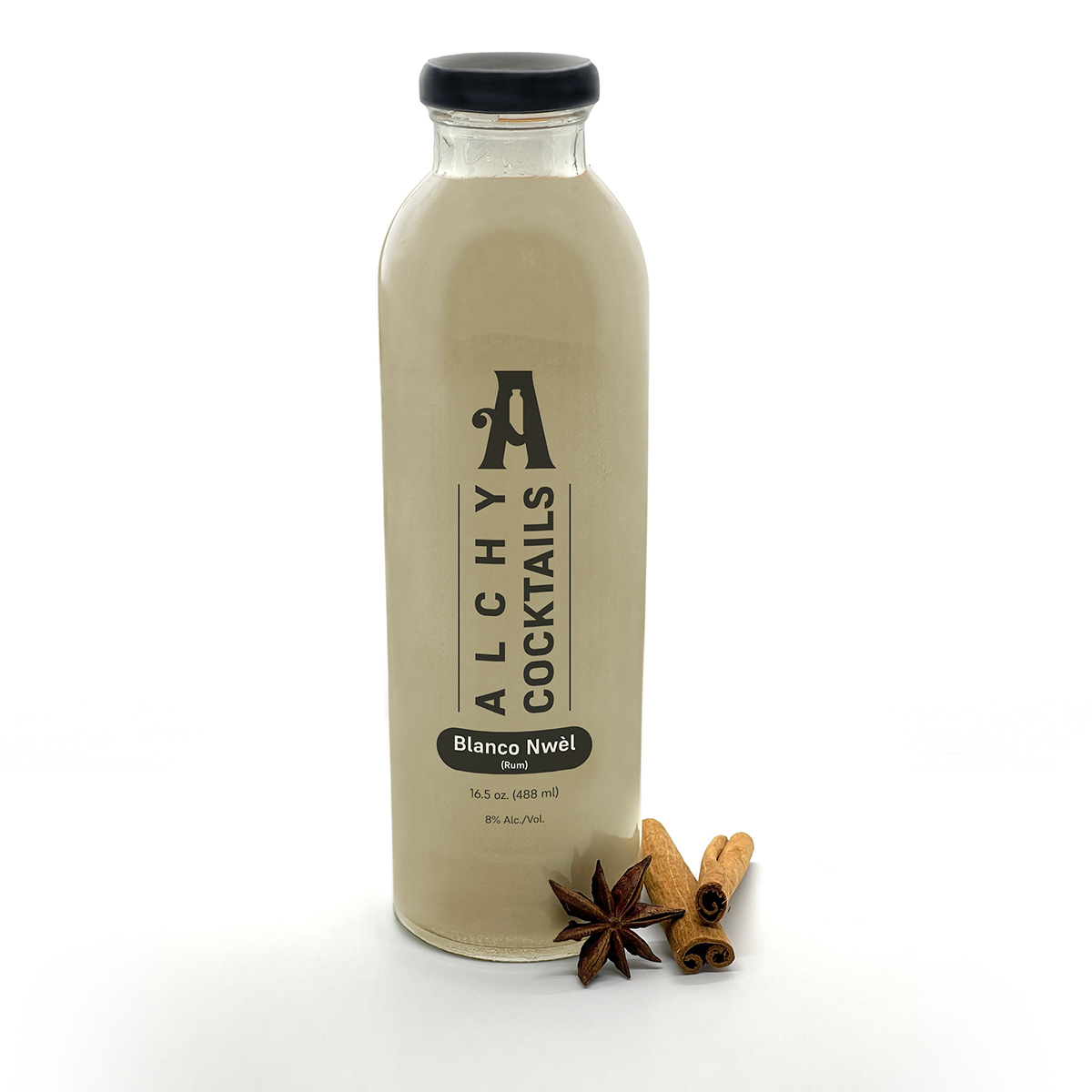
A spicy bite: Gordy’s Cajun Okra from Salt and Sundry. These spicy, tangy pickles pull on Southern Cajun-style flavors, packing a punch with paprika, cayenne, and more. Gordy’s is an LGBTQ-owned and Washington-based brand, making this gift an opportunity to support a local LGBTQ business straight from the jar. This pantry staple is available on Salt & Sundry’s website and at its locations in Union Market, Logan Circle, and its Georgetown holiday pop-up store. ($14)
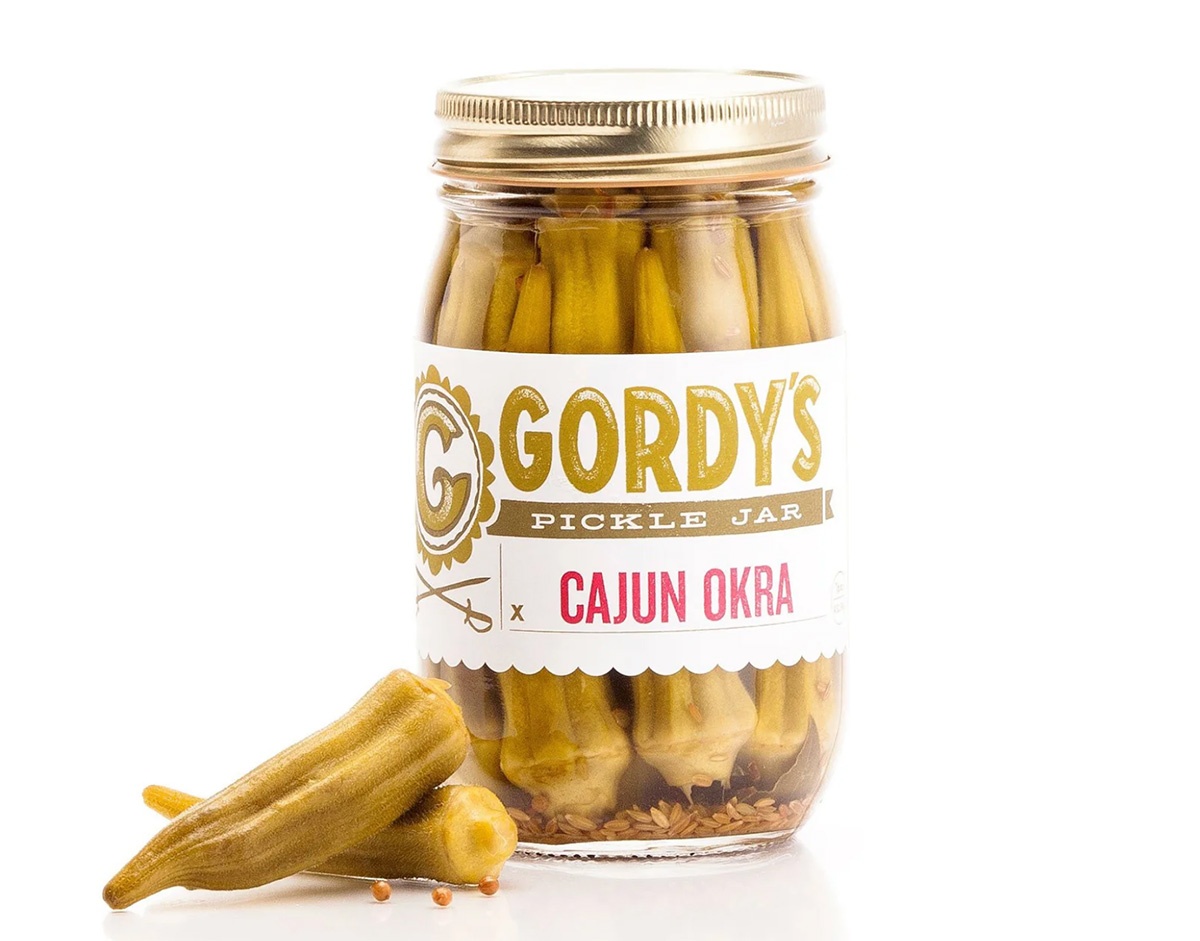

To celebrate Washington pride: The DC Landmark Tote Bag from The Neighborgoods. Native Washingtonians, visitors, friends and family alike will find something to love about this Washington-themed tote bag. Food trucks, the 9:30 Club, the Metro logo and pandas from the National Zoo are just some of the city’s landmarks depicted across the tote in a red, white, and blue color palette. The tote is a part of the DC Landmarks collection, which donates 10 percent of its sales to the American Civil Liberties Union. The Neighborgoods itself is a local, woman-owned business built out of a passion for screen-printing in 2013. The 100 percent cotton canvas tote is for sale online or at the DowntownDC Holiday Market. ($22)
To give friends and family their flowers: The Flowers Bandana from All Very Goods. This 100 percent cotton bandana was designed in Washington and hand printed in India. Its uniqueness comes in being covered with the faces of Black women, representing a “love letter to all women but especially Black women,” according to All Very Goods. The Black woman-owned and operated business, based out of Northwest Washington, has a mission to celebrate diversity and representation through its products. The bandana intends to give Black women their “flowers.” The Flowers bandana is available for purchase online. ($24)
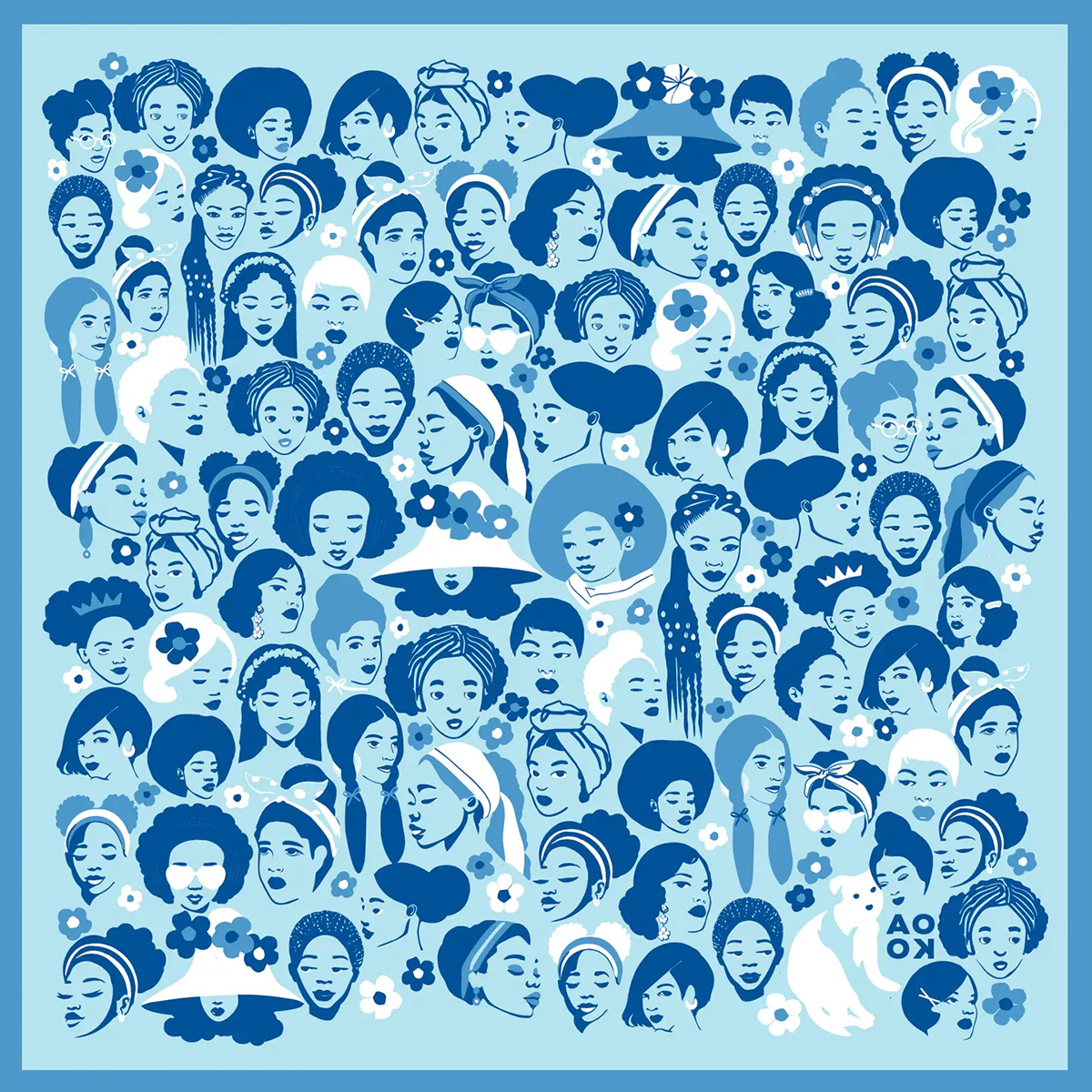
To unlock culinary creativity: The Curious Chef Gift Collection from Each Peach Market. This customizable collection of kitchen oddities — ranging from tinned fish to chili oil — is a quirky gift for the most inventive chefs. The collection is available in a Standard Santa, Extra Goodies and Super Holiday Size for up to $165. The Washington-based market, founded in 2013, permits customers to make the collection special by specifying what unique ingredients are packaged, including products made by local or LGBTQ brands. Each Peach Market offers assembly and pick up in-person at its Mount Pleasant shop and also offers local delivery and nationwide shipping via its website. ($85)
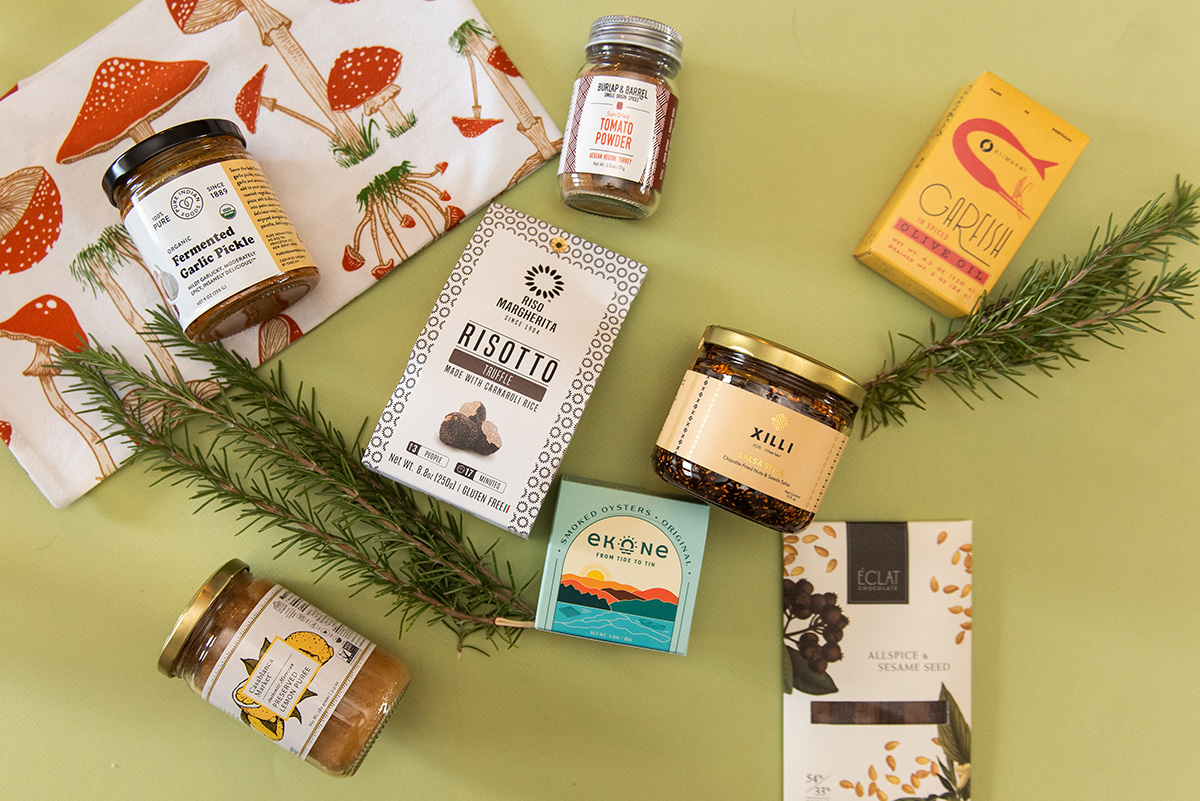
To give a touch of sweetness: The DC Landmark Chocolate Covered Oreo Holiday Cookies from Capital Candy Jar. Wrapped in a festive red bow, this box of nine cookies embraces love for Washington and the holiday season in one. Among the dark and milk chocolate covered cookies are images of the U.S. Capitol, the White House, the Lincoln Memorial, the Jefferson Memorial and festive hollies. The treat, packaged in a Hill East facility just a few blocks from the Capitol, is available for purchase online and at the DowntownDC Holiday Market. ($23.95)
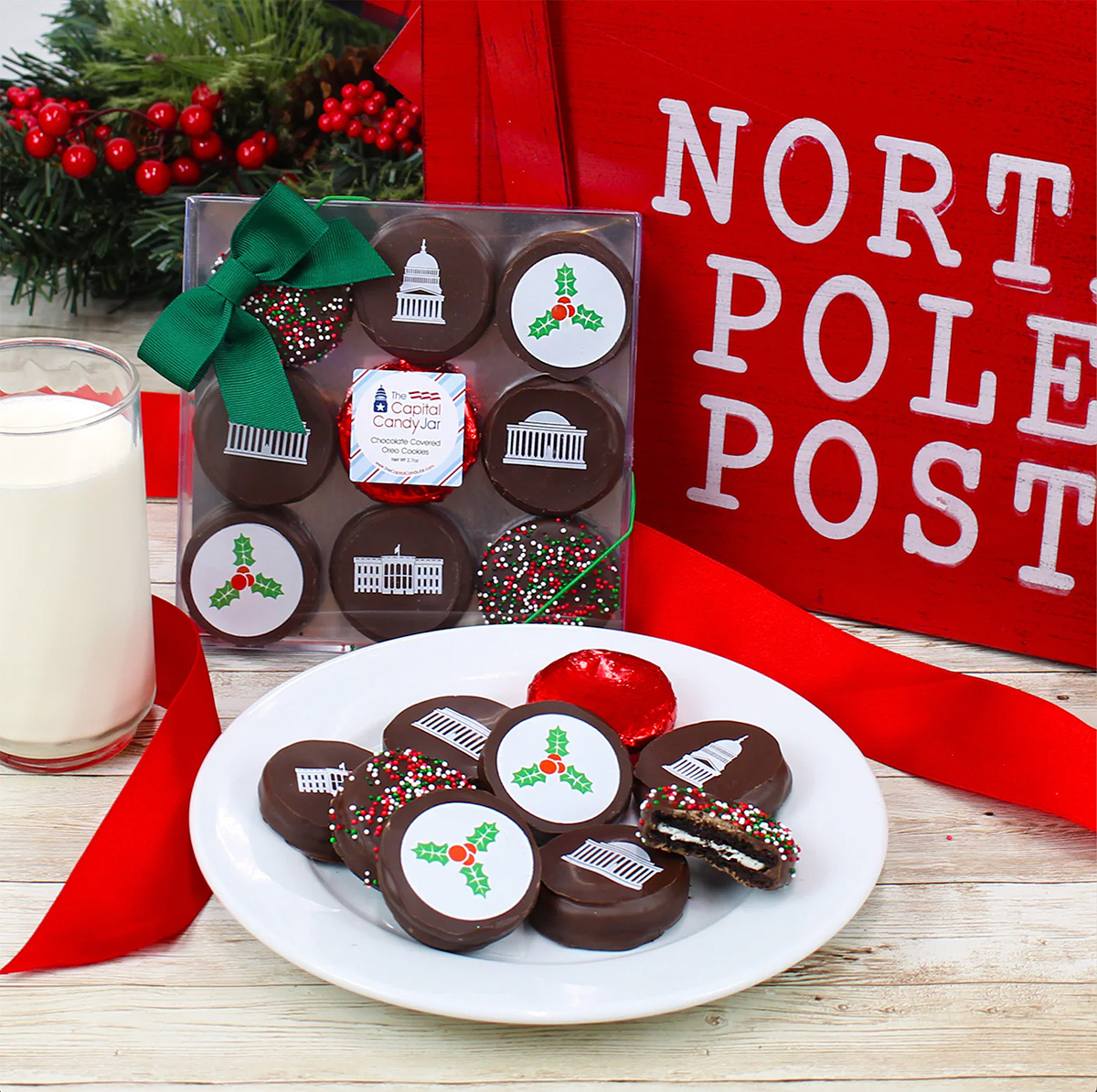
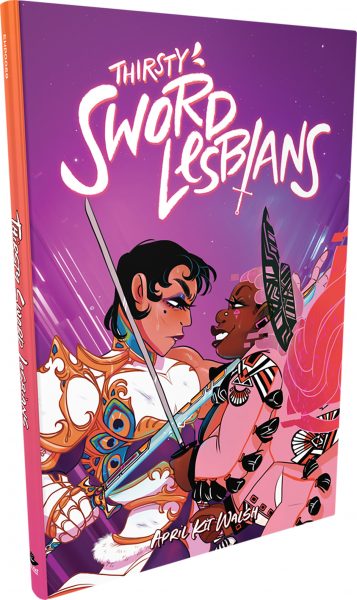
To celebrate queer gaming: Thirsty Sword Lesbians from Labyrinth Games & Puzzles. This roleplaying game embraces lesbian culture by unlocking a world of swords, romance, and battle. Ideal for group settings, the book presents a system of world building and character identities that are best brought to life by creative minds. Labyrinth, which has been a local Washington business for more than 15 years, celebrates non-digital fun through games and puzzles that connect the community. This gift is offered online and at Labyrinth’s Capitol Hill location. ($29.99)
To make a bold statement: The “Resist” T-shirt from Propper Topper. This locally screen-printed black tee features the Washington flag designed within a raised fist, symbolizing both Washington pride, and political resistance. The shirt is made exclusively by Propper Topper, a local Washington business that evolved from a hat shop to a gift store since opening in 1990. The tri-blend unisex shirt is available both for pickup at Propper Topper’s Cathedral Heights location and shipping via the online site. ($32)
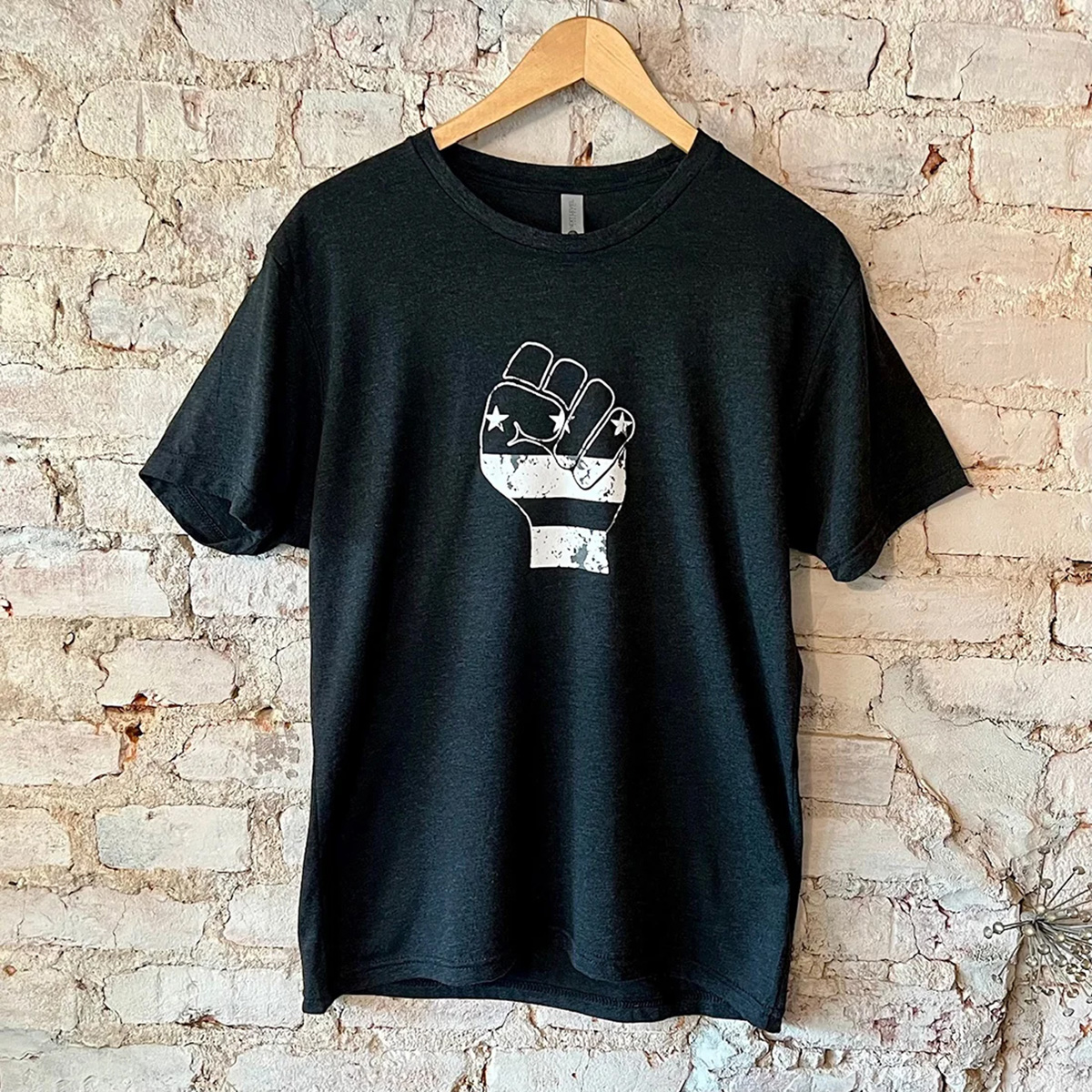
To keep it c(g)lassy: The Glass Ball earrings from Blue Moon Aquarius. Gifting can rarely go wrong when it comes to a new pair of earrings. The unique statement earrings — made of polymer clay, glass, and 18k gold plating over surgical steel — are hand cut, sanded and assembled in Washington, meaning each set is unique. Blue Moon Aquarius, a local brand, is known for its small batch jewelry and home decor designed with clay materials. Available in oxblood, hunter green, lavender, and bluestone color palettes, these earrings are available for purchase on Blue Moon Aquarius’ website and at the DowntownDC Holiday Market. ($48)
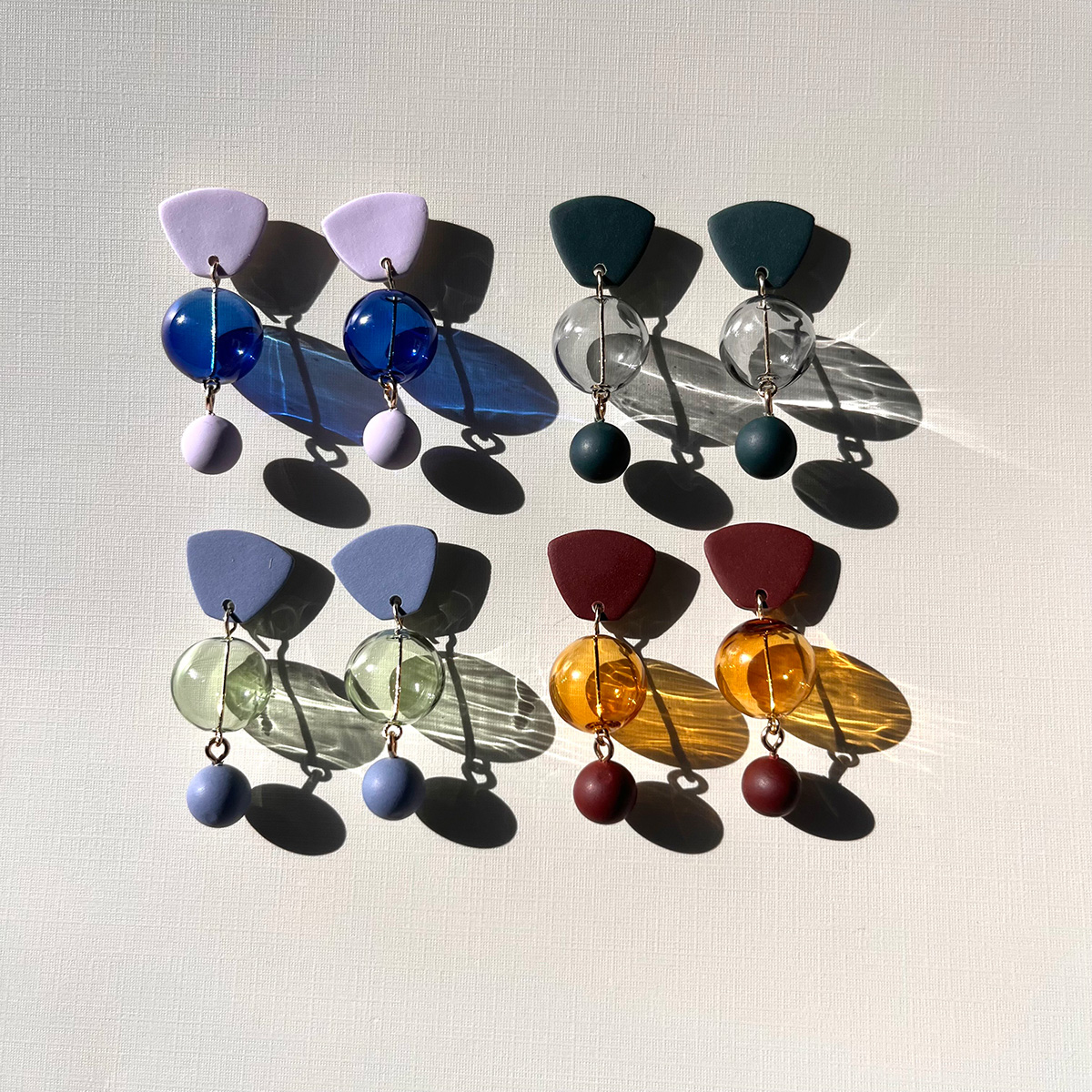
To elevate a holiday tea or charcuterie party: The Honey Flight: Tea Lover’s Selection from BannerBee. This local honey company presents the ideal gift to make cozying up with a cup of tea slightly more special. The Honey Flight contains three types of raw wildflower honey infused with fair trade Ugandan vanilla bean, chai spices, and locally sourced lemon thyme herb. The gift is also an opportunity to uplift a family company based in the Mid-Atlantic that offers all-natural, sustainable products. The flight is available online, at the DowntownDC Holiday Market or at the Arlington Courthouse and Dupont Farmers’ Markets. ($36)
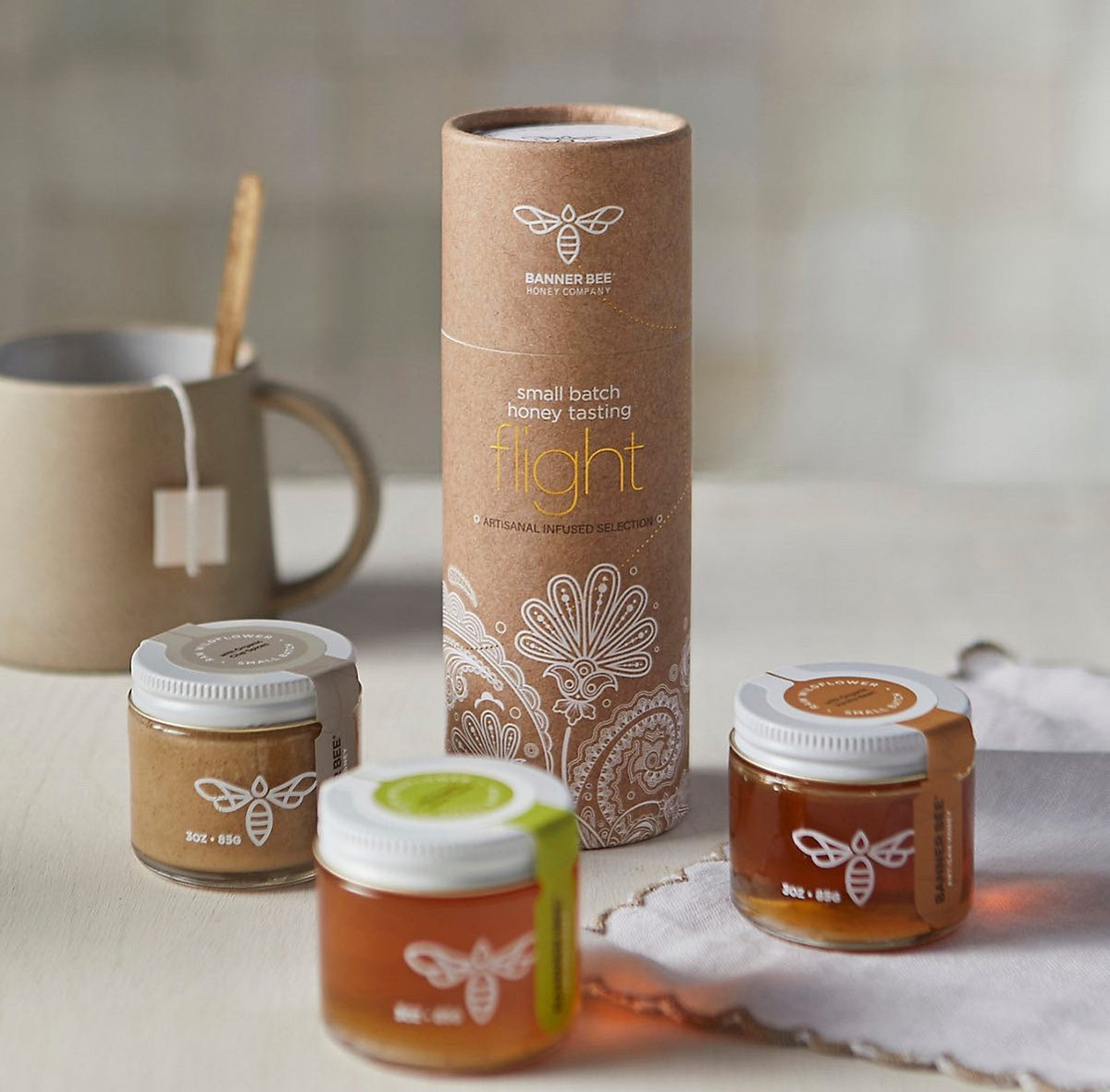
For Baltimore shoppers: If you’re in Charm City, don’t miss Balston Mercantile, opened by a gay couple in June. Their gorgeous shop in the Hampden neighborhood offers an array of unique, upscale finds, from barware and artwork to cookbooks and home decor and more. (849 W. 36th St.)

